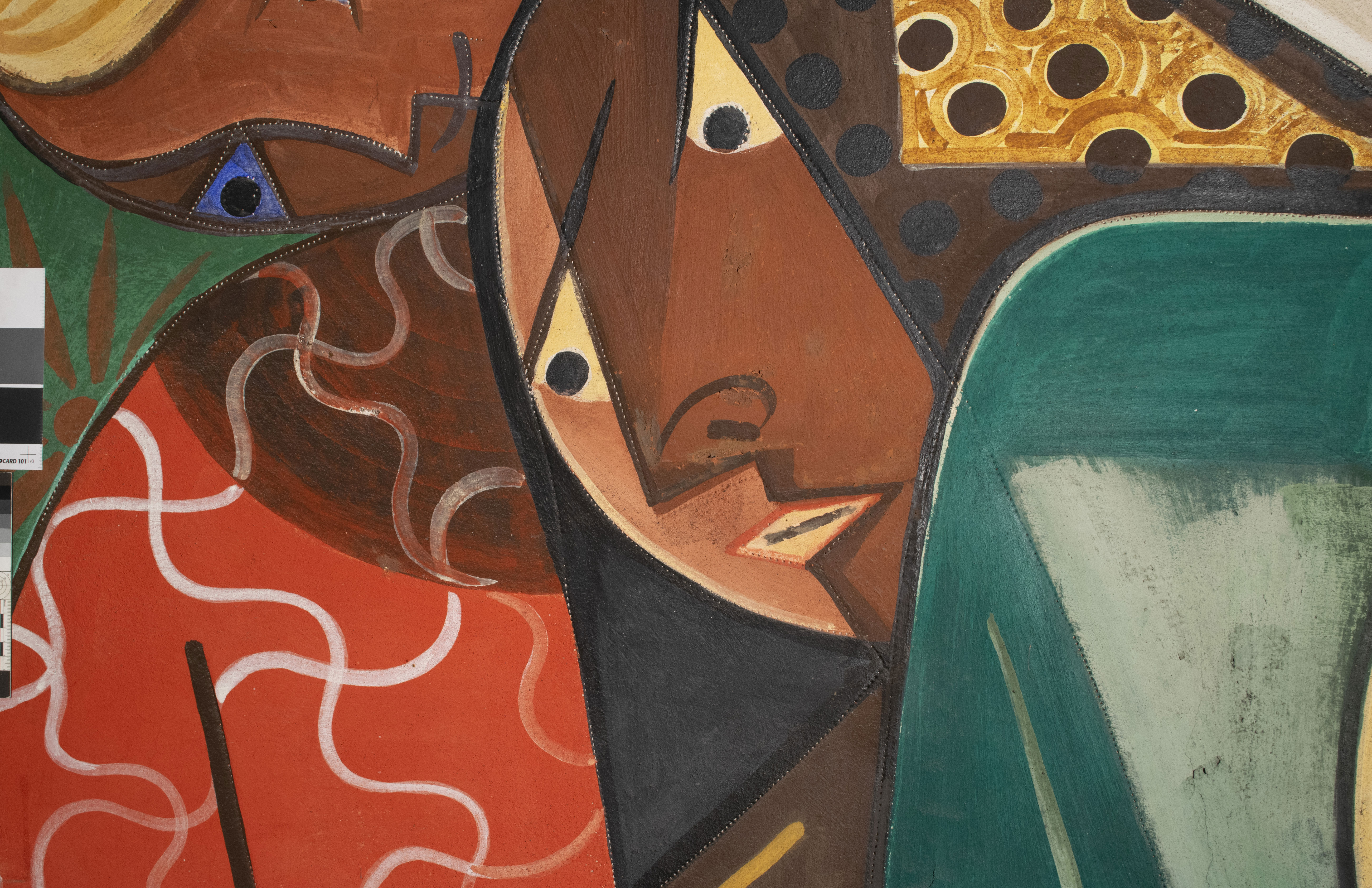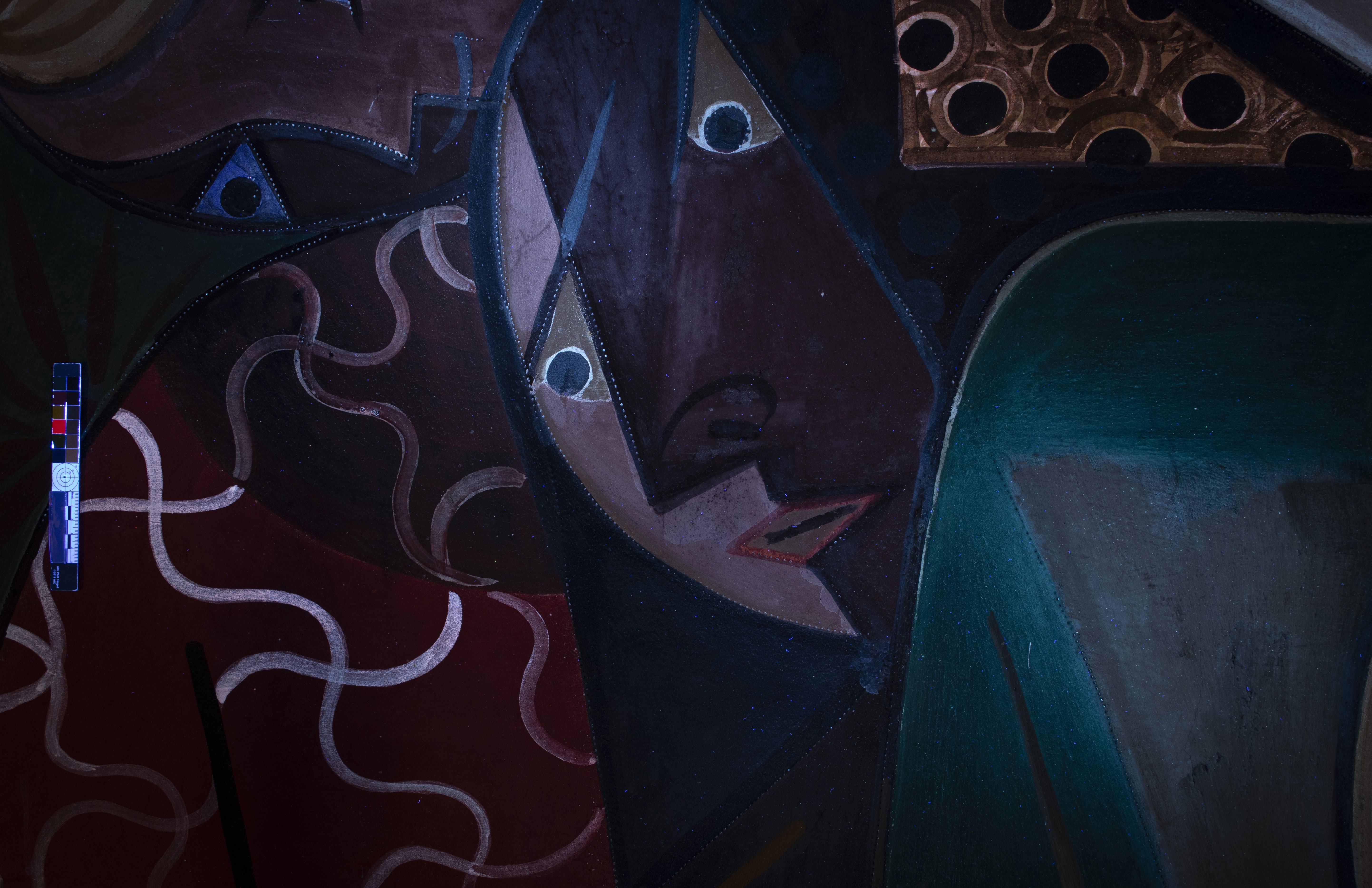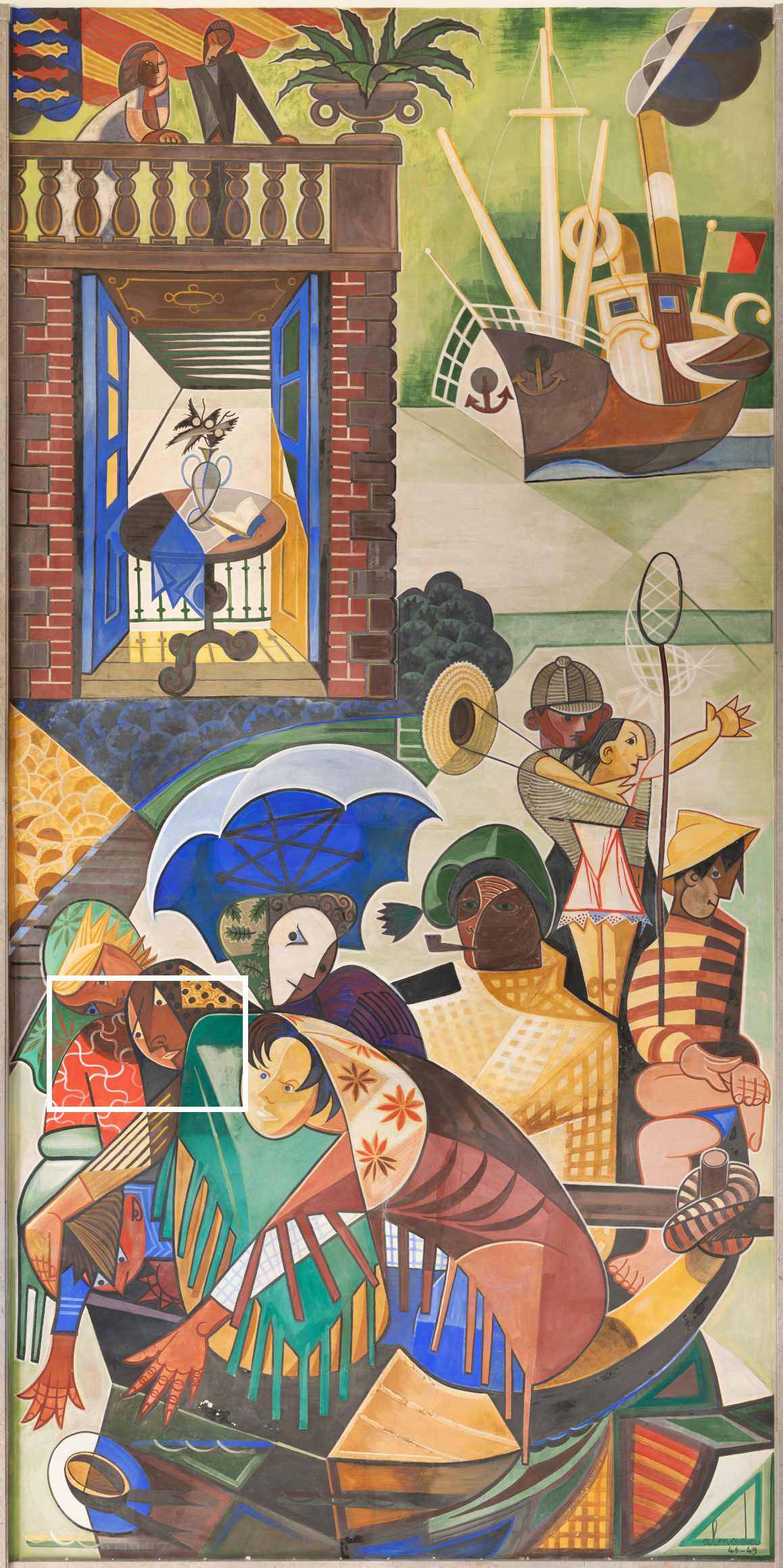Luz Visível


To observe the paintings under different wavelengths of the electromagnetic spectrum
The range of visible light comprises wavelengths between 380 nm and 750 nm, which are detected by the photoreceptors in the human retina. With visible light, it is possible to observe how Almada constructed the figures using primary colours and their different combinations, as well as the richness and diversity of geometric patterns inspired by fabric textures. The motifs, which combine symmetry and asymmetry, were created with fluid and opaque brushstrokes over a uniform colour base.
Raking visible light is the lighting obtained when a beam of visible light is directed almost parallel to a surface, that is, at an angle between 5º and 20º. This type of lighting highlights the topography of the surface, as it casts shadows even on small irregularities that are not perceptible under direct visible light. In the case of Almada’s paintings, it reveals different textures created with fluid and thicker brushstrokes, marks left by the transition from composition to still fresh plaster (incisions and small holes along the figure contours), and detachment of the paint layers visible before the restoration intervention in 2023.
Studying the paintings with raking visible light from various angles is important as it allows the observation of different aspects of the artwork, highlighting specific areas that might otherwise go unnoticed.
Tip: Move around to get a 360º view.
When exposed to ultraviolet radiation (especially at 365 nm), certain materials fluoresce, emitting visible light. Organic materials are particularly sensitive to this radiation, which is used to identify their presence in the original layers of paint. This radiation is also often used to distinguish what is original from what was applied later in restoration interventions, as different materials tend to react differently. For instance, mimetic retouches, which are almost undetectable to the naked eye, may appear as dark spots or with a fluorescence distinct from the surrounding area.
Can you identify any retouching in the image?
Colour materials also exhibit differentiated behaviour under this radiation. In the case of Almada, particular attention should be given to the use of cadmium-based red and yellow pigments, which appear pink to orange, and iron-based pigments, which turn completely dark under ultraviolet radiation.
Near-infrared radiation (750 to 1000 nm) is commonly used to analyse the deeper layers of a painting, especially preparatory drawings made with charcoal, as they absorb infrared light very effectively and appear black, revealing the artist’s preliminary sketches. However, photographs taken with this lighting can also provide clues about the colour materials used on the surface, due to the varying abilities of different materials to absorb, reflect, or transmit infrared radiation.
Have you noticed that in the image, some areas appear completely white, almost as if they were not painted at all?
This is a characteristic of some of the pigments used by Almada, such as cadmium-based red pigments. This happens because these pigments do not absorb infrared radiation significantly, but instead reflect and transmit it, giving them a light appearance.
Detail of the painting Passeio de domingo no Tejo. Gare Marítima da Rocha do Conde de Óbidos. Almada Negreiros, 1948.
